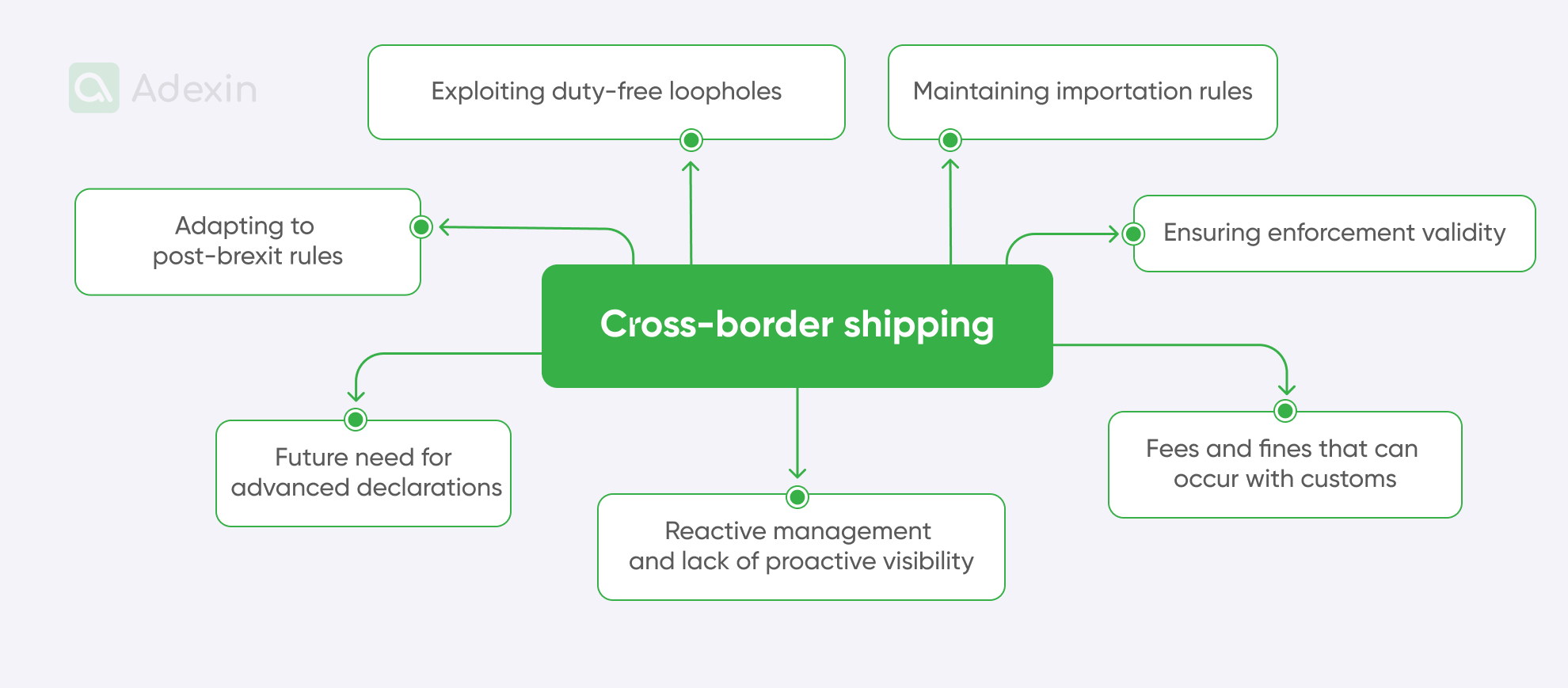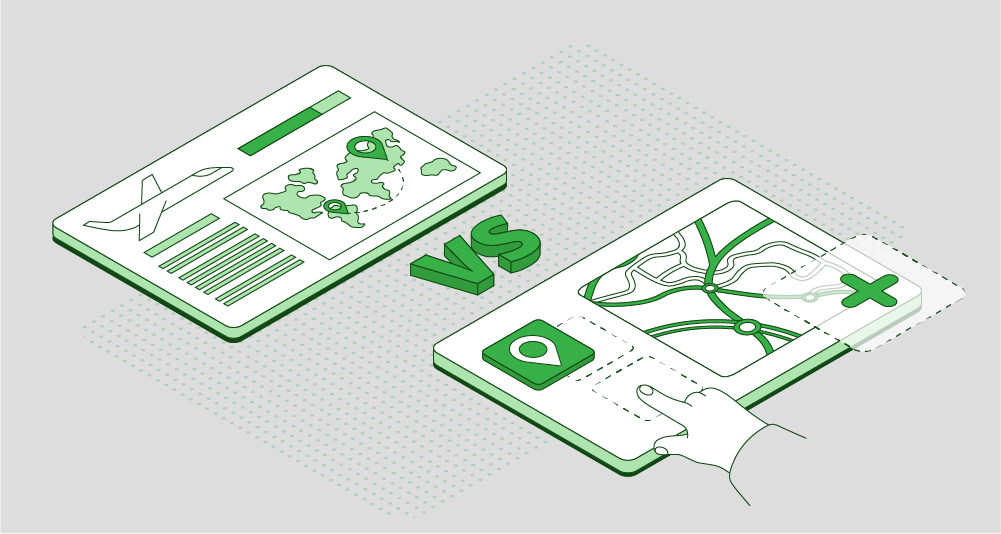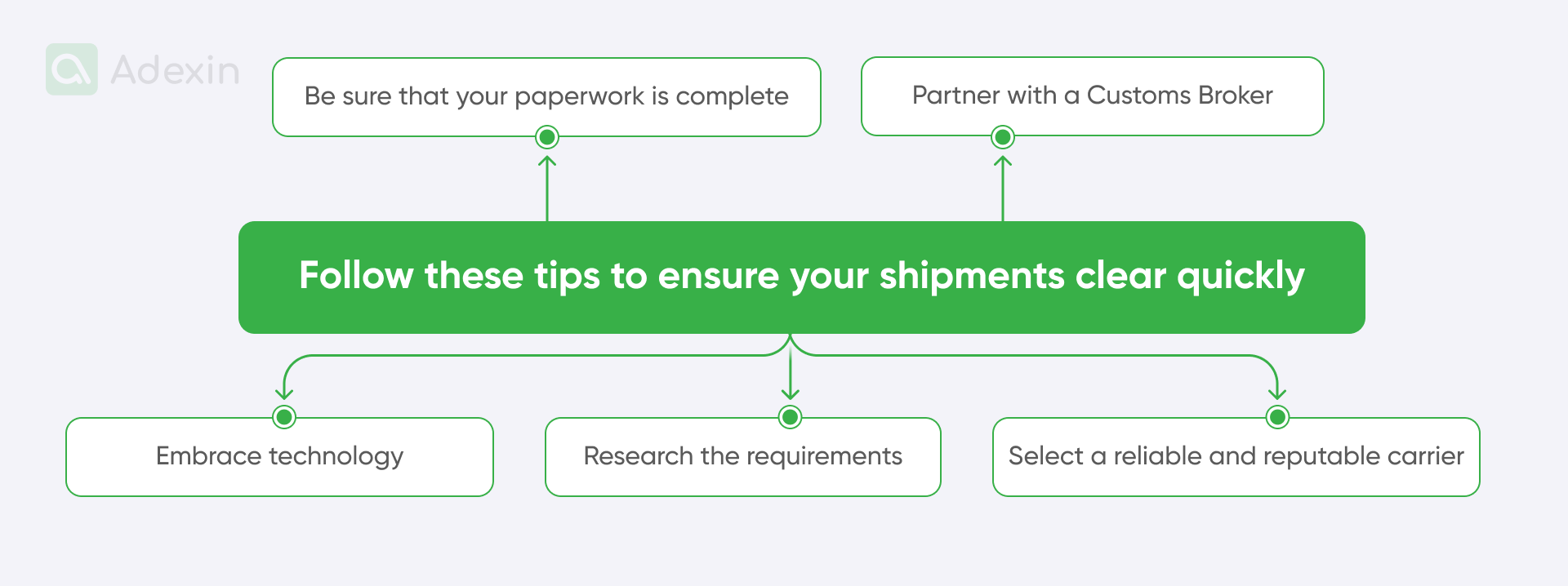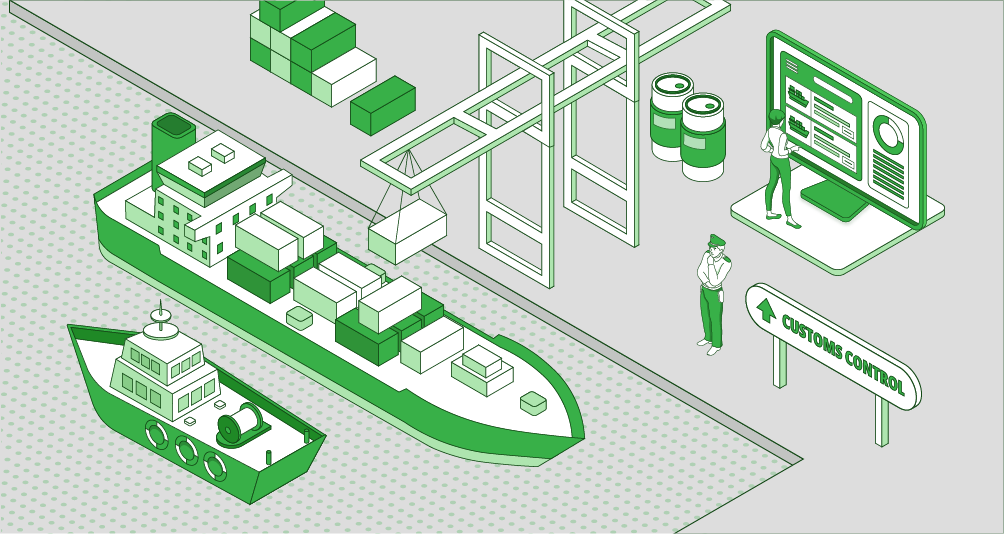Well, during my entire career at UPS SCS in the Netherlands, I've consistently encountered significant delays caused by customs clearance issues. Believe me, we faced a myriad of problems daily, often with no option but to wait until the issues at the border were resolved.
These customs problems became even more challenging to navigate after Brexit. I can still recall instances where our trucks were on the verge of being delayed at the Eurotunnel because paperwork was incomplete, lost, or even incorrectly filled out by customs officers or administrators.
For example, in 2022 alone, it was reported that 91% of logistics and supply chain companies paid penalties, mainly due to a lack of unified databases for paperless documentation. This statistic highlights a systemic issue that we regularly experienced firsthand, where a single standard for data storage and transfer could have significantly improved compliance and avoided costly holdups. The inefficiencies often led to extended waiting times, some reports indicated that switching to an electronic Bill of Lading could save up to $6+ billion a year for carrier companies arising from free trade agreements. A pretty significant number, isn't it?
Tired of customs delays eating into your profits? Learn how to navigate complex regulations and leverage cutting-edge technology. Read our comprehensive guide now and start optimizing your supply chain.
Issues with customs and cross-border shipping: live case study for the importing country
One prominent example illustrating the complexities of cross-border freight transportation, particularly concerning customs issues, is the Channel Tunnel. The Channel Tunnel Group, the body responsible for its construction, produced initial forecasts in 1985, anticipating the first year of operation in 1993. These forecasts predicted that some 18% of cross-channel freight would travel through the tunnel in 1993, with slightly less than half utilizing the shuttle trains and roughly 10% using the through rail service. Forecasts for 2003 were also provided, which informed the very decision to build the tunnel.
While a high-performing rail system is a cornerstone of zero-emission mobility, rail services in Europe often fall short of expectations. According to the EU, only 59% of Europeans are satisfied with rail punctuality and reliability. This dissatisfaction is set against a backdrop of rising overall transport emissions, which increased by 27% between 1990 and 2023, with aviation emissions nearly doubling. In stark contrast, rail emissions decreased by 70% during the same period, highlighting its potential as a sustainable transport mode despite operational challenges.
Despite advancements, the movement of goods and people across borders, exemplified by the Channel Tunnel, reveals persistent challenges that can feel surprisingly antiquated. These issues manifest on multiple fronts:

Exploiting duty-free loopholes. The previous layout of the Eurotunnel site in France allowed travelers to enter the control zone, then exit to a duty-free shop outside it, and re-enter, potentially claiming multiple duty-free allowances. This issue, which allowed repeated duty-free benefits, was addressed by an amendment in 2020. It implicates prohibited items, automotive parts, food items, alcoholic beverages, and also might also animal products, animal parts, and endangered species.
Maintaining importation rules. Changes in the French Eurotunnel site layout, specifically the location of duty-free shops, risked undermining the established time of importation rules for goods, which define when customs duties and VAT are due. The legislative amendment aimed to ensure these rules remained effective despite the physical alterations.
Ensuring enforcement validity. Even if a traveler's initial entry into the control zone was disregarded for duty-free purposes, it was crucial that any related enforcement actions, such as penalties for incorrect declarations, remained valid. The amendment explicitly preserved these enforcement rights.
Adapting to post-brexit rules. The UK's withdrawal from the EU, effective January 1, 2021, brought new customs rules for travelers, aligning those from the EU with the rest of the world allowances that obliged customs officers. The customs changes at the Eurotunnel were necessary to integrate with this new, broader UK customs regime. So, costly delays for new export provisioning are really causing additional questions among customers about the clear customs subject.
Future need for advanced declarations. While not fully implemented yet, there's a recognized need for future legislation to make advance declarations mandatory for travelers using Eurotunnel shuttle trains. This will ensure greater clarity and control over goods carried by passengers entering the UK. This also touches heavily on all customs goods in wholesale and container transport that are restricted once it isn't comply with the values.
Reactive management and lack of proactive visibility. The need to amend existing legislation, like the Channel Tunnel (Customs and Excise) Order 1990, in response to changes in the physical site (e.g., the duty-free shop's location), demonstrates a reactive approach to unforeseen operational consequences.
Fees and fines that can occur with customs. Eurotunnel can inspect or search any coach and its contents if requested by customs or other authorities, or if Eurotunnel deems it necessary. Eurotunnel isn't liable for any resulting costs, loss, damage, non-delivery, or delays unless caused by its fault or negligence.
This ongoing complexity, which can be seen at key trade hubs such as the Channel Tunnel, highlights a critical problem, despite two decades of technological advancement, fundamental challenges remain in customs control, data flow, and regulatory alignment. This is mainly because standard off-the-shelf tools are often inadequate to meet the unique and complicated requirements of international border operations. Well, all that approach requires constant manual adjustments to laws and procedures rather than seamless digital solutions.

The hidden risks of international shipping errors: eCommerce shipping example
Ecommerce success hinges significantly on two critical areas: order fulfillment and the cross-border shipping process, particularly for businesses engaged in cross-border trade. Partnering with reputable carriers and fulfillment services is paramount to ensure fast and reliable global delivery, yet this often introduces a complex web of documentation that, if mishandled, can lead to substantial delays and increased costs. As observed at the E-Commerce Berlin Expo 2024, industry experts like FedEx's Chris Hodge emphasized the crucial need for meticulous attention to detail in international shipping, including accurate translations and a thorough understanding of often-opaque customs regulations.
Neglecting these seemingly minor points, such as incorrect country of origin, HS codes, Incoterms, or product valuation, can result in a staggering 94% of overseas shipments facing delays and potentially incurring severe penalties, a risk underscored by legal experts citing fines up to €7,000,000 for documentation-related customs breaches. Therefore, successful global eCommerce shipping demands not just efficient logistics, but also an unyielding commitment to precise and compliant document handling to avoid costly pitfalls and ensure seamless customer experiences.
Need help with eCommerce logistics software for your business?
Learn how we can help you
Explore moreUnlocking North Africa: lessons from the PAIH seminar
My recent attendance at the Polish Investment and Trade Agency (PAIH) seminar in Warsaw focused on rising business opportunities in North Africa for Polish businesses. So, that further underscores the critical importance of meticulous documentation in international trade, particularly for emerging markets like Morocco. The event, which highlighted strong potential in B2B, automation, logistics, and IT for Polish companies, also provided a platform for discussions with figures like Krzysztof Karwowski, the Polish Ambassador to Morocco.
Crucially, a key practical insight gained from this seminar, highly relevant for any Polish exporter eyeing the African market via Morocco, is the strict adherence to the pro forma invoice. In Morocco, a pro forma invoice is considered a factual and final document by customs authorities. This means that any discrepancies or incomplete information, such as an inaccurate weight or price, can lead to significant delays.
Attempting to amend these details after submission to customs can cause a container to be held at the port for over two weeks, incurring substantial and costly storage fees, thereby transforming a promising export opportunity into a financial burden. This highlights that while market potential in North Africa is strong, success hinges not just on identifying opportunities but also on rigorous, error-free execution of every logistical and documentation detail.
How do we deliver a solution to prevent delays at customs?
At Adexin, we understand that in the world of global trade, time truly is money. Delays at customs can be a significant headache, leading to disrupted supply chains, missed deadlines, and unexpected penalties. Our approach to preventing these costly holdups is multi-faceted, combining industry best practices with the power of custom software solutions.

Be sure that your paperwork is complete and accurate
The details matter. Errors, omissions, and inconsistencies in documentation are one of the main reasons that shipments are delayed at the border. Pay careful attention to tariff numbers, countries of origin, and descriptions when completing documents.
Our custom software solutions, like our blockchain-backed paperless documentation management platform, are designed to minimize human error by providing standardized templates and real-time validation. You can get an automated data entry, ensuring that every field is correctly populated before submission.
Embrace technology
The use of electronic methods for data transmission ensures speed and reduces the chance of errors. Communicating shipment information via Electronic Data Interchange (EDI) to your broker is a tech-based solution that contributes to efficient, quick, and transparent transactions at the border. So, you can see that it provides a method to pre-check the customs clearance status before arrival.
Adexin's custom software development focuses on creating robust, secure, and integrated platforms that automate data flow. This not only drastically reduces the time spent on manual input but also offers features like pre-check functionalities and real-time status updates. Well, it is giving you unparalleled visibility and control over your shipments even before they reach the border.
Partner with a customs broker
Customs brokers are licensed professionals who are experts in the complexities of international trade and assist importers and exporters with completing all of the required documentation to clear shipments through the border.
While a broker is indispensable, our custom software amplifies their efficiency. By providing brokers with direct, secure access to accurate, digitally verified documentation, our custom platforms streamline their work. It is all allowing them to focus on the strategic aspects of clear customs rather than chasing missing paperwork.
Select a reliable and reputable carrier
A carrier who is certified under customs security programs like C-TPAT in the US or PIP in Canada, and has a solid reputation in the industry, can be the difference when it comes to getting your goods to their destination on time. Our software solutions can integrate with carrier systems, enabling seamless information exchange and tracking.
This integration ensures that all parties, from the shipper to the carrier to the customs broker, are working with the same up-to-date information, further reducing the likelihood of last-minute discrepancies.
Research the requirements for your commodity
Knowledge regarding your commodity is essential, including being aware of which government departments (i.e., FDA / CFIA) need to be involved. The end use and composition of the product are examples of data used to determine import requirements.
Custom software developed by our team can serve as a comprehensive knowledge base and compliance engine. These systems can store and update regulatory requirements for various commodities across borders, alert users to necessary certifications or additional documentation. So, you can even flag potential compliance issues before a shipment leaves its origin. This proactive approach, based on robust data management, is key to preventing unforeseen delays.
Let's at least look at one of our cases. Adexin partnered with eTEU to tackle these industry-specific challenges by developing a blockchain-backed paperless documentation management platform. This innovative solution directly addresses the high volume of data, tight transfer timelines, and human error vulnerability inherent in shipping. By revamping the product and integrating blockchain technology, Adexin helped eTEU create a secure and speedy system for document generation and exchange, offering an additional layer of operational transparency and security that goes beyond simple data storage.
This collaboration empowered eTEU to provide a much-needed digital tool that significantly reduces excessive costs and low operational speeds for cross-border shipping companies. Adexin's small-sized team extension proved instrumental in accelerating the project timeline, enabling eTEU to launch its product to market a remarkable six months faster than anticipated. This swift delivery is particularly crucial in saturated markets, where timely entry can be a decisive factor in securing a competitive edge and attracting new clients.

The cost of standing still vs. the power of modernization
In today’s fast-moving trade environment, customs bottlenecks can make or break a business. The choice is clear, companies that embrace modern technologies gain efficiency and resilience, while those that cling to outdated processes risk rising costs, penalties, and missed opportunities.
Delaying digital transformation in customs management can have serious consequences:
Manual operations drag you down. Reliance on spreadsheets and manual workflows results in recurring delays and costly penalties, eroding profitability.
Fragmented processes waste resources. Poorly coordinated logistics can inflate spending by 1.5 to 2 times, cutting into your competitive edge.
Wrong tools create new problems. Investing in generic, ill-fitting software often leads to another patchwork of inefficiencies, adding complexity instead of solving it.
Now imagine the alternative, a streamlined future powered by modern technology. With customized software solutions, border delays no longer dictate your business pace:
Real-time control for dispatchers. Every shipment is tracked from one intuitive dashboard, eliminating endless calls and scattered data.
Instant alerts for managers. Potential issues are flagged immediately, enabling proactive intervention before small hiccups escalate into major disruptions.
Insightful dashboards for executives. Clear customs metrics and performance data support confident, strategic decisions and reveal new opportunities for optimization.
The result is an organization freed from firefighting and able to focus on steady, sustainable growth. This isn’t theory, it’s what modern logistics systems are already delivering for companies worldwide, transforming how they move goods across borders.
In short, businesses that modernize gain speed, visibility, and control while those that resist remain stuck with delays, inefficiencies, and escalating costs. The direction you choose today will define your competitiveness tomorrow.
Are you in search of a reliable tech partner?
Adexin can help with advanced logistics solutions
Contact usFinal takeaway
Border and customs delays are no longer just an operational inconvenience, they are a critical threat to profitability, customer trust, and long-term competitiveness. While outdated processes, fragmented regulations, and manual errors continue to slow global trade, businesses that embrace modern, technology-driven solutions gain the advantage of speed, accuracy, and resilience. The path forward is clear: proactive compliance, digital transformation, and seamless collaboration across all supply chain partners. Companies that modernize today won’t just avoid costly border delays, they’ll position themselves as leaders in tomorrow’s global marketplace.
Ready to turn this vision into your reality and stop customs delays from eating into your profits? Let’s connect and discuss your specific logistics processes. Together, we’ll outline a tailored technical approach and implementation timeline created to deliver these results for your business.


